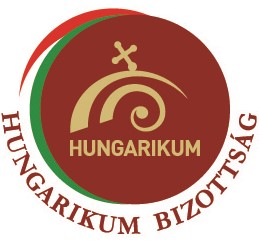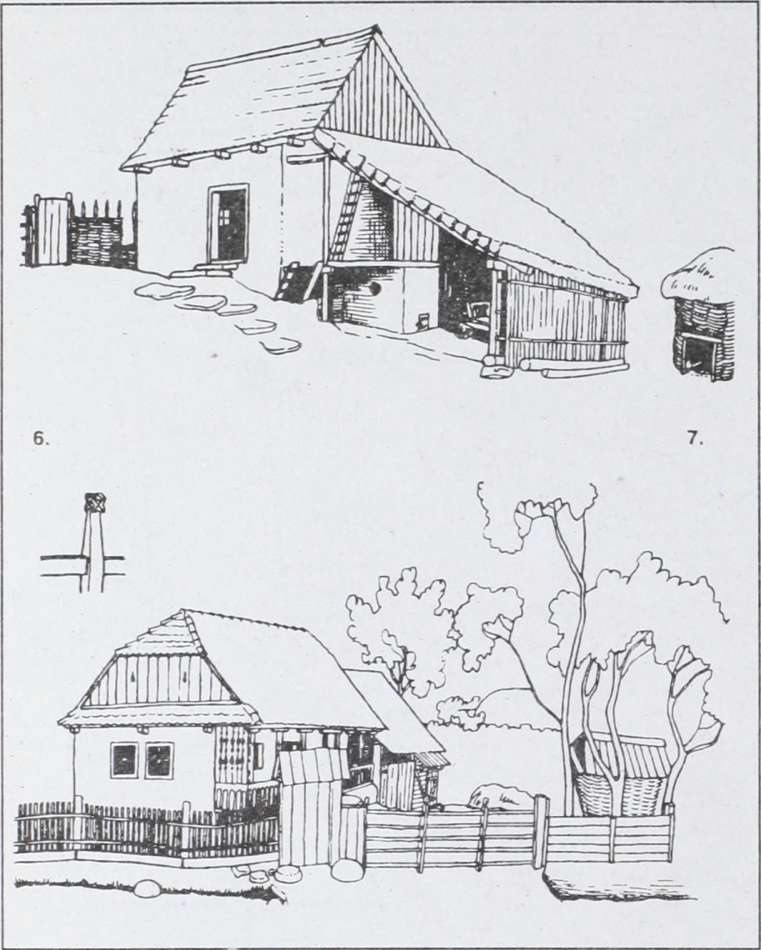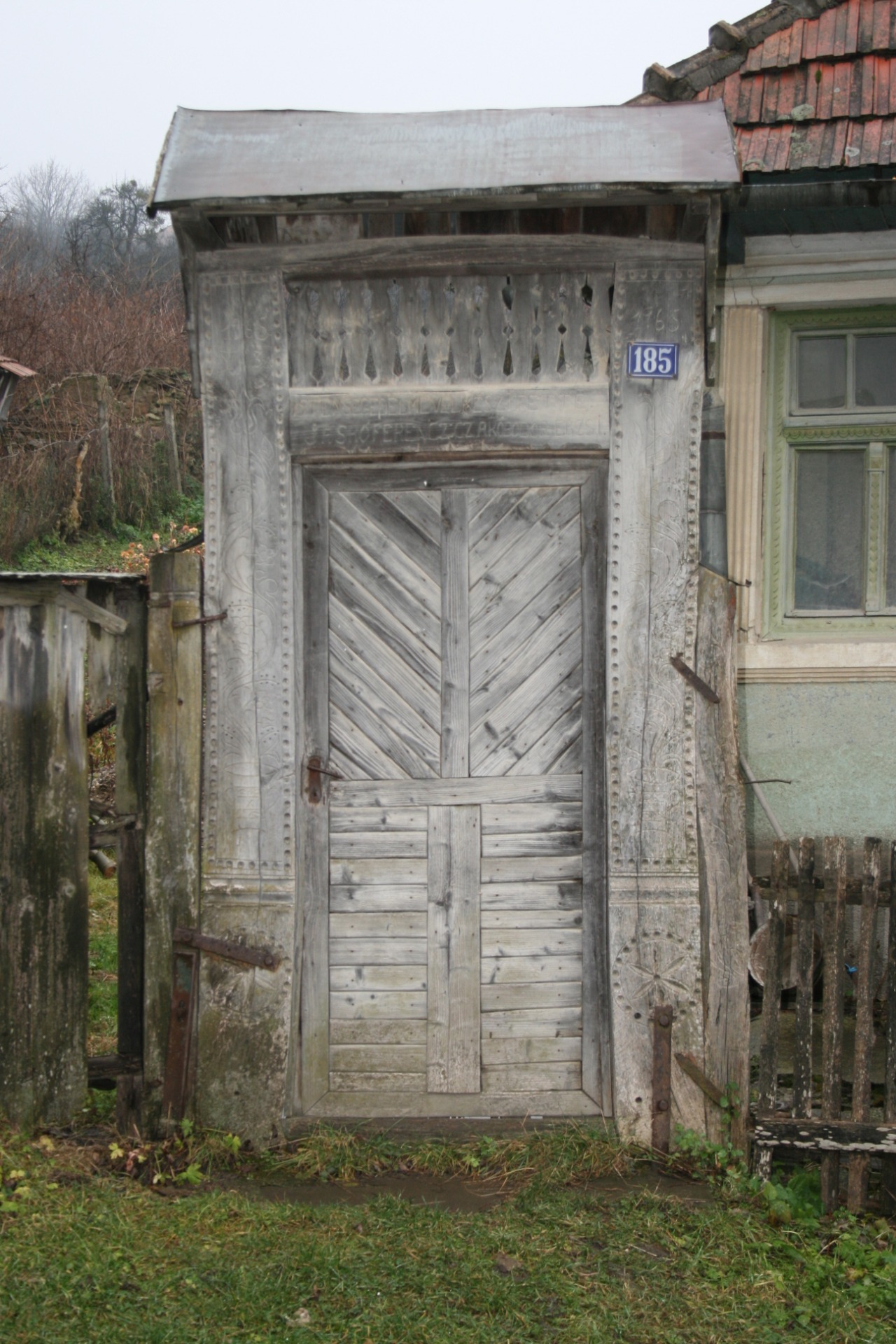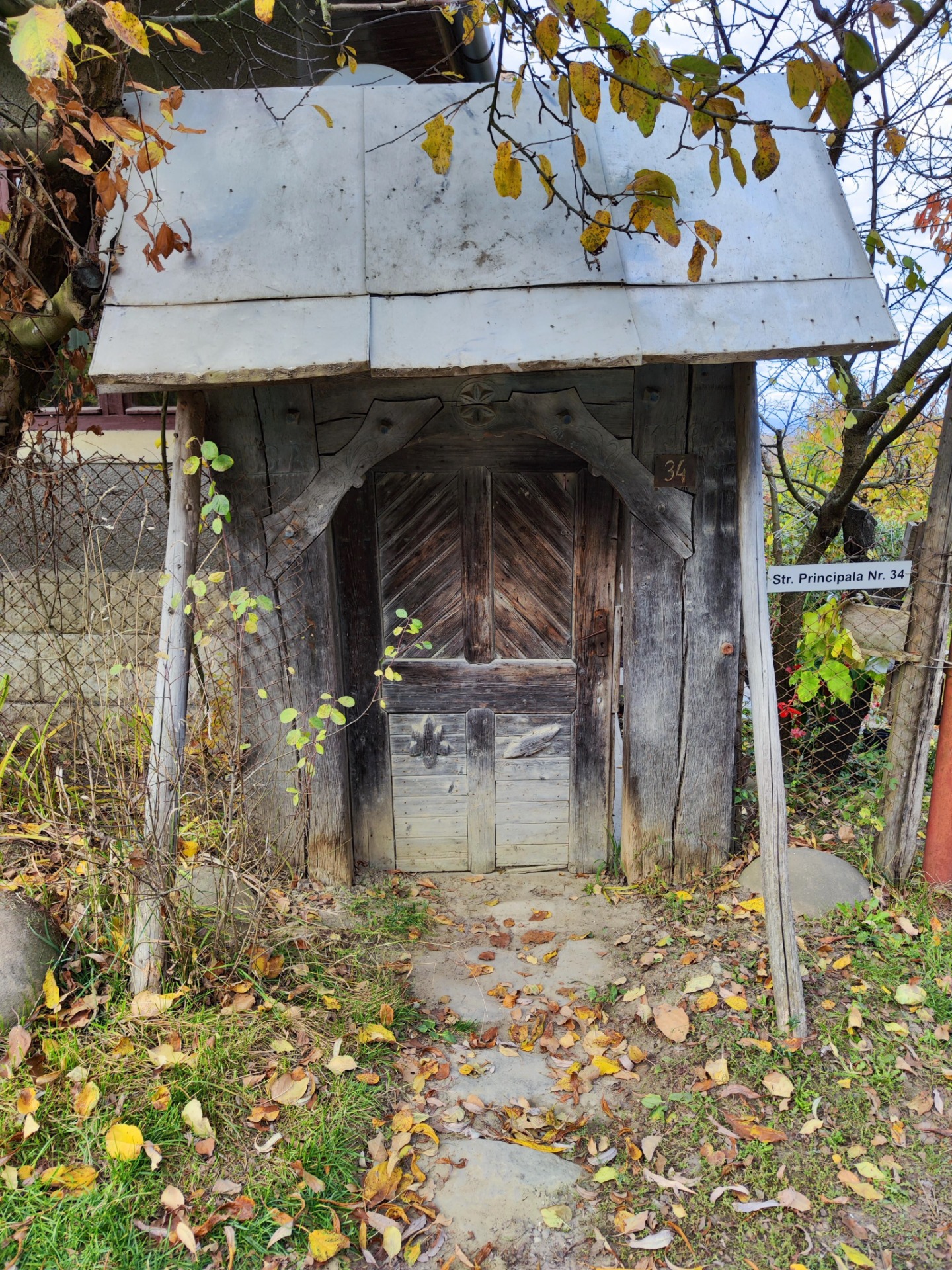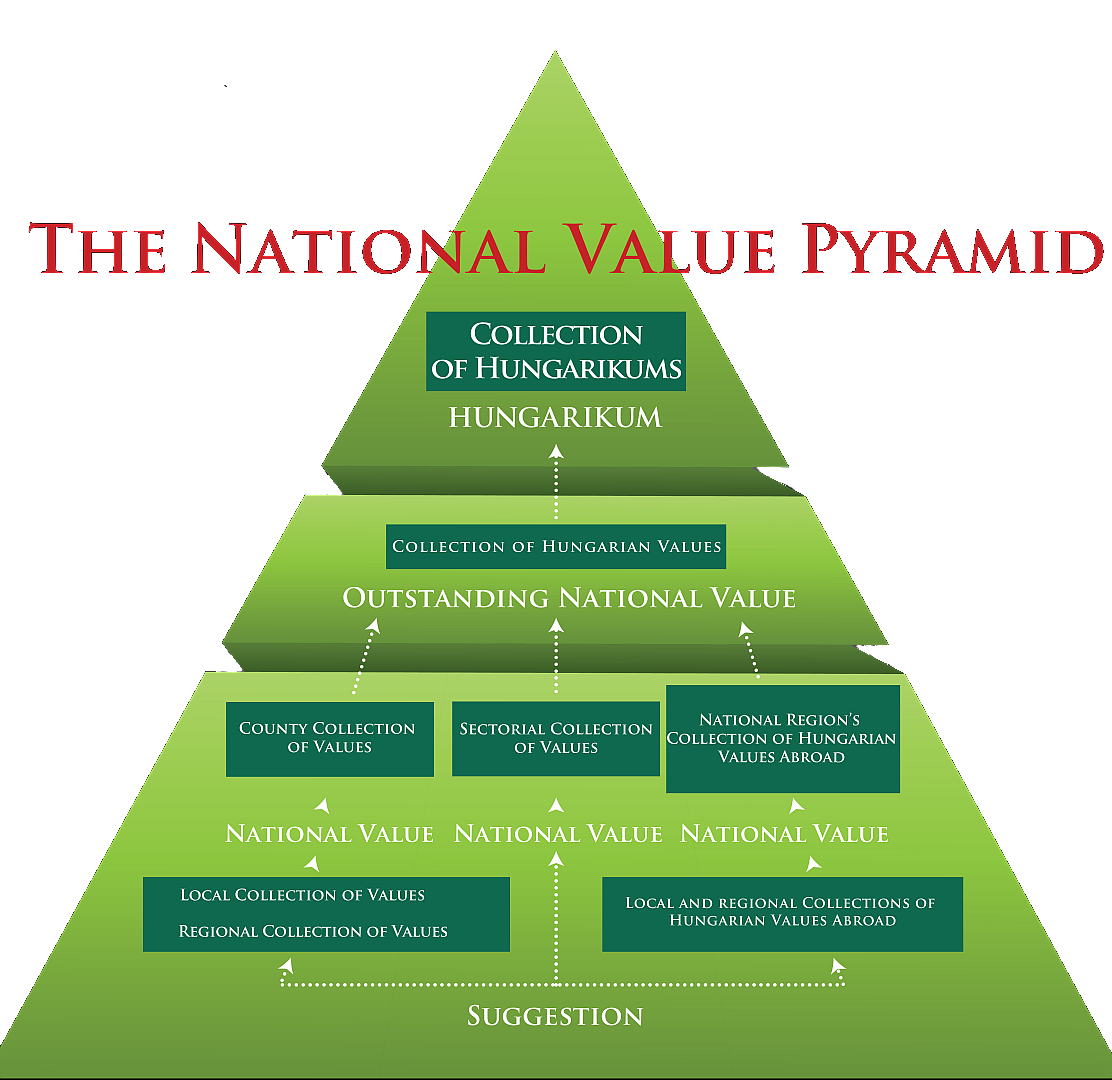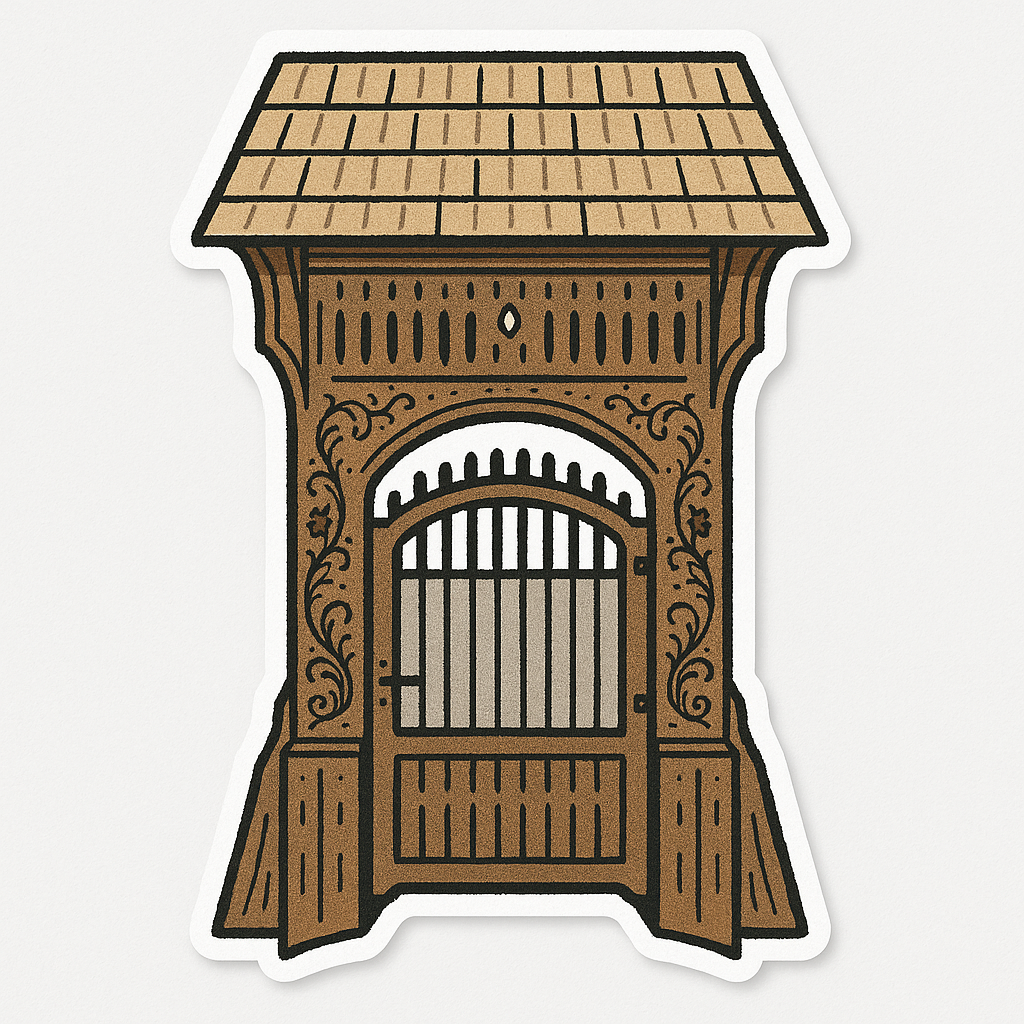The Village Gate:
Cultural Heritage Project Description
This project is an initiative of the Falu Kútja Association aimed at preserving and transmitting the cultural heritage of Györgyfalva. For 14 years, the association has been dedicated to safeguarding, teaching, and passing down both tangible and intangible values of local folk traditions.
Project Background and Necessity Rather watch the project video? Click here
Györgyfalva is currently undergoing significant social changes, such as unprecedented population growth, the disappearance of traditional rural lifestyles, and the decline of agriculture and animal husbandry. These changes are leading to the gradual loss of the village's rich symbols, motifs, and decorative elements from its landscape. While, thanks to the Táncház Movement and local civil efforts, folk textiles, costumes, and painted furniture remain vivid parts of contemporary life, the fate of carved architectural features has been different. Traditionally carved oak gates and richly decorated houses once displayed an abundant variety of forms and motifs, but such elements are now nearly absent from modern construction. Surviving examples exist only as traces or documented in ethnographic collections, notably by Károly Kós and young ethnographers from Cluj.
Project Aim and Gate Description
The main goal is to build and install a traditional Györgyfalva gate—richly decorated with authentic carvings—next to the village's legendary central well. Its structure, lintel, and roof will fully adhere to historical techniques and styles. The gate will feature an information panel with a village map, place names, points of interest, historical and ethnographic context, and the legend of Shepherd György, who, according to local lore, found the life-saving spring in a time of drought.
Location and Visibility
Placed at the heart of the village, at the legendary well and bus terminal, the gate will be visible both to visitors and passing traffic, ensuring its symbolic and practical prominence.
Connection to National Values
The Village Gate links directly to major national values, such as the legacy of architect Károly Kós and the Székely gate tradition.
Implementation and Collaboration
Design and execution of the gate rely on collaboration between a master carpenter and ethnographer, while the information panel's content is produced in partnership with graphic designers and local experts. Community consultation is key to ensuring historical accuracy, social acceptance, and educational value. Overall coordination is ensured by the association president, whose 14 years of experience and ethnographic training guarantee the project's professionalism.
Main Stages of the Project (minus financial details):
Preparation of technical drawings, decoration, and licensing documentation, led by a certified architect.
Selection and acquisition of seasoned oak logs and lumber for the gate's structure.
Construction and carving of the gate by a skilled master carpenter.
Landscape planning and digital visualization of the gate's immediate environment.
Physical landscaping, including foundation work and drainage.
Design and creation of the information panel with traditional motifs, finalized via community input.
A public inauguration ceremony with local and cultural leaders.
Financing
The project is funded by the Hungarikum Committee.
The National Value Pyramid and Hungarikums
Hungarikums are outstanding national values documented and classified via the National Value Pyramid, a system ranging from local/regional collections to nationally and internationally recognized heritage elements. The Györgyfalva Gate project aspires to become a lasting monument, preserving the village's identity and history for future generations, much like a mural in which each brushstroke tells a story that endures through time.
